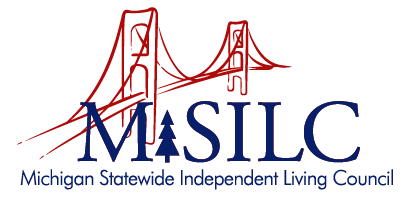Happy Black History Month! Throughout history, the work of all civil rights activists has intersected with people fighting for racial equity. Disability advocacy in particular has shared advocates, tactics, and sentiments with predominantly Black-led civil rights movements: MLK himself acknowledged that “injustice anywhere is a threat to justice everywhere” and lamented discrimination in healthcare against Americans of color and many others. Disability advocates were inspired by civil rights peaceful protests and sit-ins and used these strategies to garner support for another type of diversity: disability. Legislation that affirmed the rights of people with disabilities–the Americans with Disabilities Act–ultimately became law in 1990.
What’s most relevant to our current work as disability advocates and leaders is the fact that, for decades, these movements have also shared the same members. People of color, and especially Black Americans, comprise a significant portion of the population of people with disabilities in our nation. Yet, while anyone living with a visible or non-visible disability experiences barriers to access, health care and employment disparities, and much more, the effects of both racism and ableism magnify the challenges facing people of color who live with disabilities. As a result, we cannot simply ensure that disability resources and support reach every community; we must also take into account the unique challenges presented by intersectional oppression when striving to create truly accessible communities.
So how does this look in practice? A crucial step is making sure that organizations like ours represent diversity within the disability community as well as simply uplifting the voices of disabled people. In both advocacy and direct practice, it means coming to the table with ideas and solutions that address challenges specifically facing clients and residents experiencing multi-source oppression–for example, trying to help someone create an accessible home while understanding that, throughout history, people of color have too often been locked out of wealth-generating real estate opportunities by systemic racism. It can involve finding ways to help people feel comfortable reaching out to police or emergency services for assistance when they are part of communities disproportionately impacted by police brutality. Ultimately, considering intersectionality means looking holistically at a person’s full life experience when trying to assist them instead of simply centering on their disability—and it’s something we all deserve when seeking support.
For generations, the disability and civil rights movements have intertwined and diverged, focusing at times on their unique priorities, and coming together again to demand dignity and respect for diversity in all forms. Today, we understand that these movements don’t just exist in parallel—that people who have endured the challenges of systemic racism often also face social and economic barriers due to disability. As we celebrate Black History Month and reflect upon the vital contributions of Black Americans to our society, let’s also recognize the ways in which Black Americans’ presence in other communities has been minimized or overlooked, especially in past disability movements. We can celebrate the progress that our nation has made toward racial and disability-related inclusion while recognizing that true access, equity, and justice are still out of reach for many. And we can reaffirm our commitment to championing the rights of people with disabilities alongside all other civil rights, and reduce disparity by considering the multiple identities that impact a person’s life trajectory.
At MISILC, we are proud to represent and advocate for people with disabilities, their families, and caregivers and promote equity and inclusion for all. For resources and support, find your local Center for Independent Living at https://www.misilc.org/independent-living-resources





